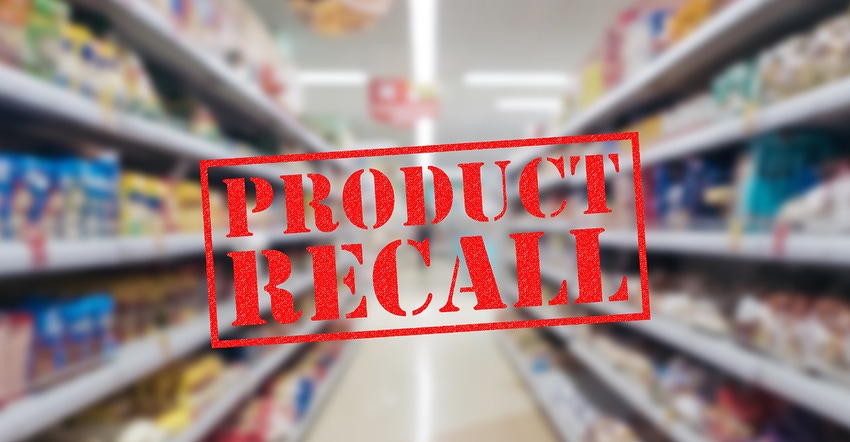Medical Device Recalls Linked to Unprecedented Level of Faulty Manufacturing 52857
A new report claims that manufacturing defects are now the number one reason for product recalls in the United States.
June 21, 2023

Poor manufacturer quality is said to be creating a new spike in the rate of medical device recalls throughout the United States. According to the most recent "U.S. Product Safety And Recall Index" report by Sedgwick, manufacturing defects are the leading cause for product recalls in 2023 through the month of March. Several manufacturing defects were related to an inability to guarantee product performance when recommended temperatures and time out of range were exceeded. These findings reportedly mark the first time in the 12-year history of the report that device recalls were blamed on manufacturing defects. Typically, issues such as sterility, quality, or malfunctioning parts are cited as the leading causes of product recalls.
The report also found that medical device recall events increased by nearly 5% during the first quarter of 2023 compared with the last quarter of 2022, and the total number of impacted device units among the recalls has jumped more than 34%, up to 83.3 million.
Too soon to call manufacturing-related recalls a trend
It would be premature to conclude that the increased number of manufacturing-related incidents is a definitive trend, cautioned Chris Harvey, senior vice president of client relations at Sedgwick, a global provider of technology-enabled risk, benefits, and integrated business solutions. “The recall environment for every industry is very dynamic, so the high rate of manufacturing defects in one quarter isn’t necessarily of particular concern just yet,” said Harvey. “It is difficult to make predictions about how recall trends will change, but based on past data, it is likely that we will not see as high a number of recalls due to manufacturing defects in the next quarter.”
Released quarterly, the anonymous index report presents in-depth analysis of the most recent product recall data, safety regulations, and key challenges for the medical device, pharmaceutical, automotive, consumer product, and food and beverage industries. The report features analysis and perspectives from brand protection experts and is intended to mitigate recall risk, litigation, and reputational damage caused by crises and in-market events.
One company is responsible for 75% of Q1 recalls
Among the overall medical device recalls during the first quarter of 2023, more than 75% — 45 total incidents — were reported by one unnamed company, Harvey noted. When considering these 45 incidents as a single event and extrapolating the remaining number of events over the course of a full year (for a total of 60), there’s only been one year since 2016 with fewer recorded events (58 in 2022). “We can, therefore, say that this quarter was irregular,” Harvey said. “Manufacturers will likely continue to adopt new technologies and materials that have a higher resistance to developing defects once in the market. This high rate of recalls for manufacturing defects [through March 2023] may be contained.”
Software can mitigate defects
Recalls related to manufacturing defects may warrant removal of devices from the market and, thus, potentially disrupt patient care delivery. It’s anticipated that advanced technology will more commonly be developed and utilized by manufacturers to adopt new devices and materials that offer better resistance to developing defects once they’re in the market. “We’re also seeing greater adoption of software within medical devices that can allow manufacturers to closely monitor their devices and potentially catch manufacturing defects before they fully emerge and communicate with patients the need to bring in their device for repair or replacement,” said Harvey.
The FDA is also attempting to improve supply chain performance and prevent product shortages by implementing digital solutions for new product submissions. Cybersecurity and the protection of patients from cyber threats also will be an ongoing focus of the FDA, according to a press release issued by Sedgwick in late May. Manufacturers were notified by the FDA in September 2022 that all medical device 510(k) submissions will be required to use an electronic Submission Template And Resource (eSTAR) format beginning Oct. 1, 2023, unless an exemption is granted. In January 2023, voluntary enrollment began for the initial phase of the FDA’s Total Product Life Cycle Advisory Program (TAP) pilot, a program designed to foster early, frequent, and strategic communications between the agency and medical device sponsors while ensuring the development of high-quality, safe, effective, and innovative devices. Revised draft guidance released by the FDA in December 2022 clarified the organization’s authority to conduct inspections of medical device facilities and/or to delay, deny, refuse, or limit a device, similar to the way FDA regulates the pharmaceuticals industry.
Be prepared
Moving forward, Harvey also envisions more internal coordination and communication among affected device manufacturers as a positive development of the recent report.
“These kinds of recalls can introduce more risks for manufacturers, but a properly designed and practiced recall plan can prepare manufacturers for all necessary components of the recall and reduce the margin of error,” he said. “In some cases, a manufacturing defect does not warrant a full removal [of the device] from the market, but can be solved with on-site remediation. This is especially prevalent for devices that are bulky, installed in a specific location, or [can’t be moved] physically from their location.”
As the industry continues to evolve with new technologies and best practices, and as regulators continue to implement new regulations and guidance with technological advances, Harvey expects the potential for better devices but also challenges in avoiding recalls.
“While there are benefits to being an early adopter of these advancements, medical device manufacturers should also be wary of marketing devices with technologies that are not expressly regulated. [They] should be mindful of the additional cyber risks associated with incorporating additional technology or software into their devices,” he said.
About the Author(s)
You May Also Like

